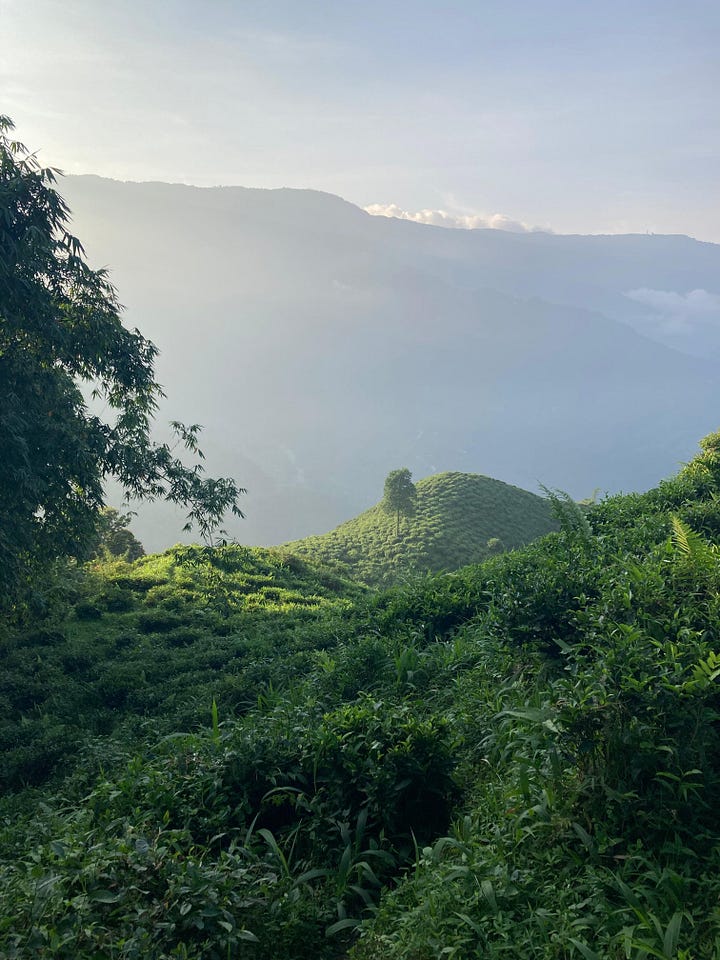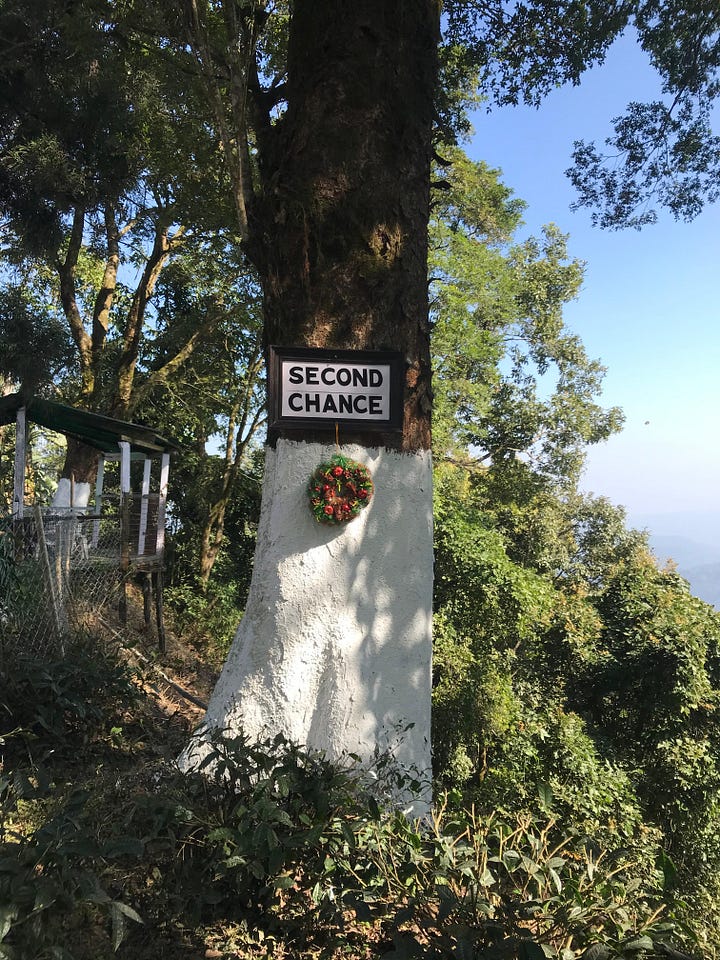parvat say #1
Parvat Say is a newsletter bringing to you important news and perspectives, relating to Climate Finance and Carbon Dioxide Removal (CDR), from the global south.
Parvat Say is a play on words. In Darjeeling, where we’re based out of, mountains are referred to as ‘parvat.’ These dispatches are hence “From the Mountains.” They’re also a voice, putting to words the thoughts and ideas that are emanating from the mountains of Darjeeling, hence “the Mountains speak.”
about us
Alt Carbon is an early-stage climate-action company based out of India, undertaking permanent CDR, through Enhanced Rock Weathering (ERW) on our family’s heritage tea estates in Darjeeling, India.
Our aim is to scale up ERW within South Asia in order to remove CO2 at scale, while mobilizing climate finance and creating co-benefits for at-risk communities and ecosystems.
why rock weathering?
As per the IPCC, in order to keep 1.5 °C alive, we need to undertake CDR at the scale of 10 GT every year. We believe that 40% of this target can come through scaling up rock weathering (ERW) as a CDR method.
For this, India is ideally placed to offer scale, as well as bring down costs. To understand the potential of ERW, you should check out this interview of Jane Flegal, ex White House staffer, and currently a part of the Frontier Alliance.
good-reads from india around climate
Last month, former Centre for Policy Research scholar Navroz Dubash announced the launch of a new think tank focused on India’s transition in the face of climate change. The Sustainable Future’s Collaborative brings together climate scientists and policy makers of myriad backgrounds to focus research on India’s adaptation & mitigation to climate change. At their launch event, former Chairperson of the Fifteenth Finance Commission, N.K. Singh went on to emphasize the importance of moving climate finance for CDR technologies in the Global South.
Last month India’s Environment Ministry released its methodology for it’s Green Credit Program, which envisages a domestic VCM of sorts, purely focused on enhancing India’s forest and tree cover. While the underlying idea of treating ecosystems as capital assets is one that we resonate with, the issue with the current Green Credits program is its lack of coherence, as has been pointed out by experts. Without robust regulatory oversight for such programs, investor/philanthropic confidence in the Global South will remain scant
We spoke to the Financial Times about how the creation of a Commodities Futures Market for Tea could help producers deal with the effects of climate change. The lack of a Futures Market for tea as compared to coffee and cacao, brings up the question: are financial markets not interested, because majority of tea consumption still takes place in the Global South?
India is bracing for unprecedented heat waves in the coming months, just as it undertakes the largest elections the world has ever seen.
In a major development for the world of CDR and climate finance for the Global South, MATI Carbon has delivered its first tranche of CDR credits to the Frontier Alliance. While the delivery is only for 50 tons, it should have a catalytic impact both for Climate Tech companies in the ecosystem as well as mobilizing private capital for CDR to the Global South.
global south spotlight
In this BBC interview, President Irfaan Ali of Guyana brought up important issues pertaining to the rights of Global South countries to have access to capital in order to undertake adaptation & resilience. His interview reminds us of Lula’s argument about the Amazonian Rainforest– it’s an ecological public good that the world must pay for.
(Click on the here to watch the full interview)
what we’re reading
This report by our friends at the Carbon Removal India Alliance is a lucid, scientifically grounded, yet accessible primer on the landscape of CDR in India, along with the immense potential that it holds. We highly recommend it to anyone interested in understanding India’s CDR regulations and startup ecosystem.
The Economist’s Climate Editor’s special report on how the transition will look like for petrostates, that have to now invest in adaptation measures caused largely by their own activities, was a fascinating read. Especially this chapter on increasing investments in carbon removal and storage being undertaken by Big Oil.
With news of the expected heatwaves across the country, we’ve been revisiting Kim Stanley Robinson’s monumental Ministry for the Future. The harrowing opening scene of the book, describes a killer heatwave in Uttar Pradesh— striking very close to home.
“India is now leading the way on so many issues! We remain horrified by the memory of the heat wave, galvanized, and if not unified then nearly so, in a broad coalition determined to re-examine everything, to change whatever needs changing.
You see it all around you!”
Robinson understands that climate action requires climate finance. In his book, only after a killer heatwave in India, does public opinion and political machinery get mobilized towards large scale action. Is it necessary for catastrophe to strike, before the clean up begins?
hope in the time of climate change




Starting a climate action company is a response to alarm, but it is fundamentally grounded in optimism. March had a lot in store for us in Darjeeling— from a raging forest fire during the first half of the month to the best rainfall recorded in the month of March in a decade; we’re now finally welcoming Spring, and with it our first harvest of the year: the much awaited First Flush Teas are here. As with every year, we wonder whether this will be our final harvest!

If you enjoyed this newsletter, please forward it to friends/colleagues who might find it useful. My inbox is always open at sparsh@altcarbon.in to discuss what is happening in the world of Climate Action in India.












Well curated! More power to you guys.